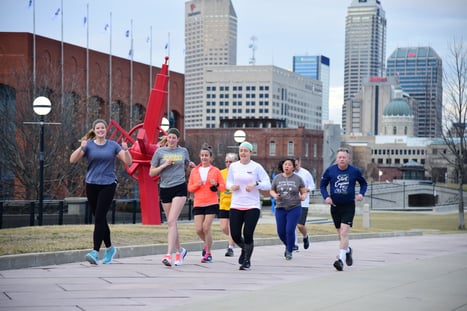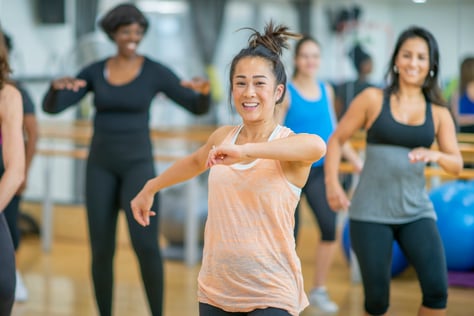 Running with others is one of the most effective strategies for creating a running habit and continuing it. The social benefits of running are among the biggest reasons why runners start and stick with running. Whether you’re running with one friend or a running group, here are some ways you can benefit from group running.
Running with others is one of the most effective strategies for creating a running habit and continuing it. The social benefits of running are among the biggest reasons why runners start and stick with running. Whether you’re running with one friend or a running group, here are some ways you can benefit from group running.
- You’ll have group role models. People naturally start to adopt the habits of those around them. Spending time with other runners will help you form a running habit because you’ll start to mirror your running friends’ habits.
- You’ll motivate each other. With a running group, you get regular encouragement. Members encourage each other at races and during long runs. You’ll be more motivated to stick to your training because you’ll hold each other accountable. It’s harder to skip a workout when you know others are waiting for you.
- You’ll feel a sense of belonging. Being part of a cohesive team can you give a sense of purpose and help you make new and meaningful connections.
- You’ll get creative stimulation. It’s fun to share ideas when running with a group. You can bounce ideas off your running friends and ask them for advice.
- Your performance will improve. Everyone flourishes with a little healthy competition. When you’re running with others who are pushing you to run faster and harder, it’s easier to take it to the next level. When running alone, you may be tempted to cut your workout short; when others are depending on you, however, you’ll want to do the entire workout, and maybe even a little extra.
- You can network. Running with people you know is a great way to network and build your professional relationships in an informal way. You’ll develop a camaraderie with other runners that’s difficult to replicate in an office or other work setting. Building and strengthening relationships through running may lead to a new job or other opportunities. Many runners have found new jobs or made important professional connections through running.
This blog was written by David Behrmann, NIFS Health Fitness Instructor.To learn more about the NIFS bloggers, click here.


 Consistency is arguably the most important component when working to accomplish goals, in or out of the gym. Without consistency, programs are unorganized, the body has a harder time adapting, and forming habits may be more challenging.
Consistency is arguably the most important component when working to accomplish goals, in or out of the gym. Without consistency, programs are unorganized, the body has a harder time adapting, and forming habits may be more challenging.